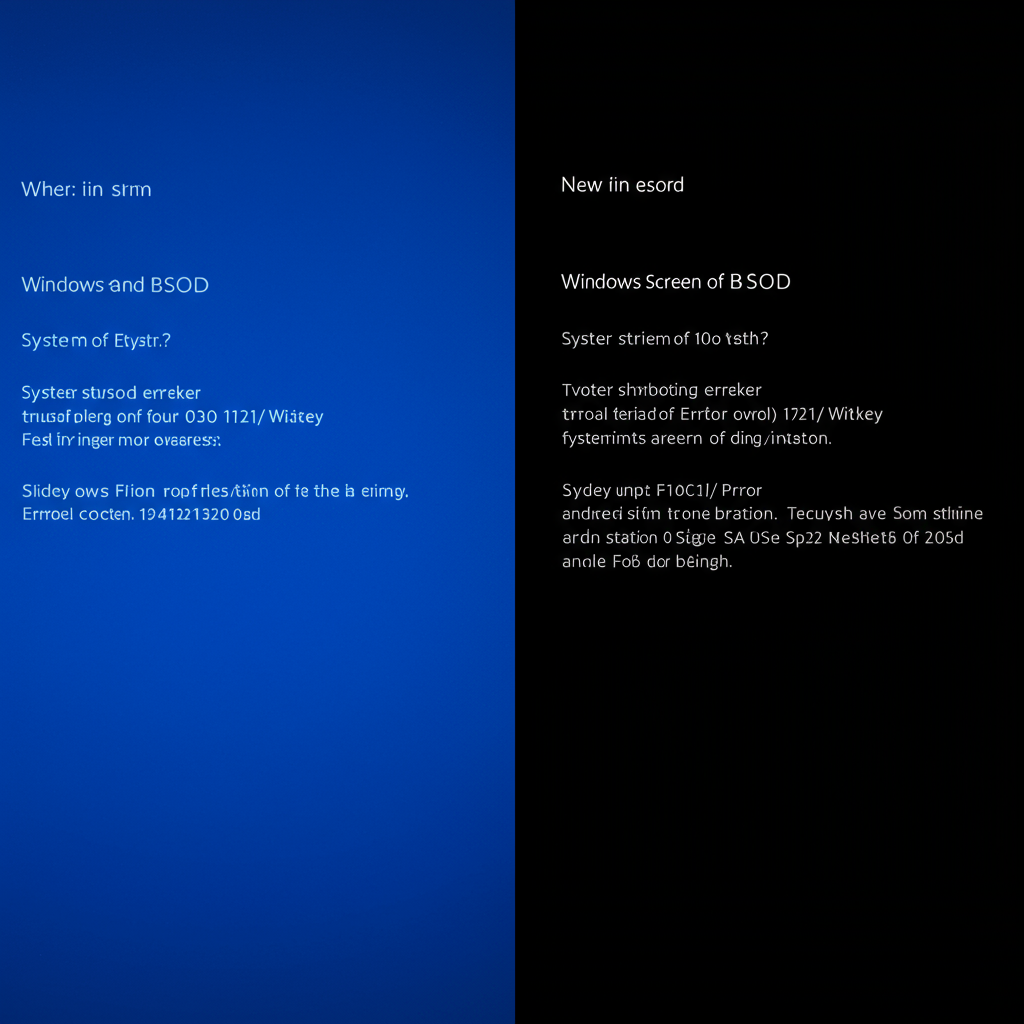Few computer users haven’t experienced it: the sudden, unwelcome appearance of the Blue Screen of Death (BSOD). For over four decades, this iconic error message, signifying a critical system crash, has been synonymous with a bright blue background and a sense of dread. Now, Microsoft is set to change its appearance drastically, ushering in a new era for handling system failures.
Soon, Windows users encountering a system-stopping error won’t see blue; they’ll see black. The infamous “screen of death” is getting a visual overhaul, switching its background color after more than 40 years.
Why the Big Change? Improving System Resilience
This change isn’t merely cosmetic. Microsoft states the updates to the error screen are part of broader efforts to enhance the resilience and recovery capabilities of the Windows operating system.
The initiative gained urgency following incidents like last year’s CrowdStrike incident, which led to millions of Windows machines crashing globally. Microsoft is aiming to “streamline” the user experience during disruptive “unexpected restarts,” making it “easier than ever to navigate” these errors and “recover faster.”
What the New Black Screen Shows
Beyond the stark new black background, the updated error screen features several key differences:
Shorter, Simplified Message: The overall text displayed is being condensed for clarity.
No More Frown: The familiar frowning face icon that often accompanied the blue screen is being removed.
Restart Progress: In place of the frown, the screen will now display a percentage indicating how far along the system’s restart process is.
This “simplified” user interface for unexpected restarts is designed to provide clearer information during a stressful event.
Introducing Quick Machine Recovery
Alongside the updated error screen, Microsoft is rolling out a significant functional improvement: Quick Machine Recovery. This new mechanism is designed to help systems that fail to restart successfully after an issue.
Microsoft highlights that this feature will be particularly valuable during widespread outages*. It will allow the tech giant to “broadly deploy targeted remediations” and automate fixes for many issues. Crucially, this mechanism aims to resolve problems “without requiring complex manual intervention from IT,” potentially saving significant time and effort for administrators during large-scale disruptions.
Availability
Both the visually updated black error screen (as part of the simplified interface for unexpected restarts) and the new Quick Machine Recovery mechanism are scheduled to become generally available later this summer. They will roll out on all devices running Windows 11, specifically version 24H2. Microsoft also plans to add additional capabilities to the Quick Machine Recovery feature later in the year.
The shift from blue to black marks a significant visual departure for one of Windows’ most recognizable (and feared) elements, signaling Microsoft’s push for a more streamlined, informative, and resilient recovery process after system crashes.



